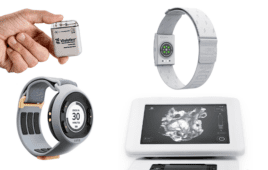Free whitepaper explains that an effective Healthcare Disaster
Recovery strategy is dependent on a solid understanding of a
hospital’s applications and data
Ashtead, UK and Woburn, MA, USA – August 25, 2010 –
BridgeHead Software
today released a whitepaper on Healthcare Disaster
Recovery that offers an integrated strategy to address the
uniquely complex data and storage management issues healthcare
providers must consider as they develop hospital-wide backup and
recovery policies. Available for download, the
whitepaper details why disaster recovery (DR) is different in
healthcare and, therefore, requires a different treatment when
compared to disaster recovery in other industries.

BridgeHead Software Logo
As the whitepaper explains, the data landscape in the healthcare
industry is more complex than it is in the vast majority of other
industrial and commercial sectors. This intricate environment
results primarily from the varied data types – namely
structured, unstructured and semi-structured – which are
generated by both clinical and administration systems. The paper
goes on to reveal that the type of data being secured and protected
is inextricably linked to how that data needs to be recovered. It
also outlines how IT professionals can reduce their backup burden
by as much as 70 to 80 per cent.
“For many hospitals, the sheer volume of data being
generated is preventing them from successfully protecting and
securing their patient and administrative information,” said
Tony Cotterill, Chief Executive of BridgeHead Software.
“Understanding the unique characteristics of healthcare data
is the first step to implementing an effective backup and disaster
recovery strategy that will reliably -bring a hospital’s
information back online within minutes and hours, rather than hours
and days, after a disaster, systems outage, corruption or
loss.”
BH MediSafe Helps Meet Hospital DR
Requirements
BH MediSafe from BridgeHead Software is a flexible, modular
approach that solves a pressing healthcare IT issue: that of
implementing a DR strategy that can reliably and realistically deal
with the massive upsurge in data demands, now and into the
future.
When implemented as the foundation to a DR strategy, BH MediSafe
uses a combination of traditional backup and archive to fully
protect data and improve the recovery process in the event of
outage, corruption or loss. BH MediSafe protects healthcare
information by first analysing whether the data is
“static” (unlikely to be accessed or changed again) or
“dynamic” (regularly accessed and likely to change),
then protecting it accordingly. Since it selectively moves static
data into a fully protected archive, the traditional backup of the
dynamic content is optimised and data recovery both at the file and
the system level is vastly improved.
BH MediSafe allows healthcare organisations to:
• Understand their data, which leads to a more
effective data protection and DR policy;
• Reduce backup windows and improve system administration
efficiency by identifying static content and moving it to
self-protecting repositories;
• Create a single management system for protecting static
and dynamic data;
• Improve single-item restore coupled with full and
efficient protection against “once in a lifetime”
disasters;
• Make protected data available for secondary or research
use;
• Achieve ROI via its multitasking capabilities.
“While healthcare organisations are generating new data at
a dizzying pace, a full 80 per cent of hospital information is
static data that, after 14 months, may never be accessed
again,” said Tony Cotterill. “By significantly reducing
the amount of data to be replicated and moving static information
onto low cost archives, BH MediSafe helps healthcare organisations
implement DR strategies that set and meet realistic Recovery Point
Objectives (RPOs) and Recovery Time Objectives (RTOs)
goals.”
(ends)
About BridgeHead Software
BridgeHead Software, the
Healthcare Storage Virtualization™ (HSV™) company,
offers a scalable, future-proof platform to overcome rising data
volumes and increasing storage costs while delivering peace of mind
around the access, availability and protection of critical
electronic patient data.
Trusted by more than 1,000 hospitals worldwide, BridgeHead
Software solves healthcare organizations’ backup, recovery
and archiving challenges. BridgeHead’s HSV solutions are
designed to operate with any hospital’s chosen software
applications and storage hardware, regardless of vendor. This
presents healthcare organizations with more choice, flexibility and
control over the way data is accessed, protected and managed. The
net effect – better utilization of hardware resources and,
more importantly, the efficient distribution, availability and use
of vital healthcare data.
About Healthcare Storage Virtualization
(HSV)
Healthcare Storage Virtualization is a technology platform that
decouples software applications from the allocation and management
of the physical storage hardware on which the application data
resides. By separating these applications from the storage
device/s, healthcare organisations have a lot more choice,
flexibility and control over the way data is accessed, protected
and managed. The net effect – better utilisation of hardware
resources and, more importantly, the efficient access and use of
critical electronic patient data.
HSV allows healthcare organisations to take ownership of their
data even though it may reside on disparate software and hardware
systems. Being vendor-agnostic, BridgeHead HSV has the ability to
interface with any storage platform intelligently, creating better
and broader availability of content as well as prohibiting unwanted
access and providing comprehensive disaster recovery
capability.
In addition, BridgeHead HSV technology offers powerful
connectivity to all storage media types. As part of its advanced
data protection and archiving features, HSV allows files to be
transformed (e.g. compressed and de-duplicated) invisibly in the
background, irrespective of media type and functionality, vastly
reducing the capacity required across the storage real estate and
often delaying the need for hardware upgrades.
Finally, BridgeHead’s focus on healthcare lies at the
heart of HSV. Consequently, all of the common native standards
found within healthcare IT are supported e.g. HL7, DICOM XDS style
interfaces etc. This support allows speedy integration of the HSV
solution resulting in a more rapid return on investment.
To learn more about BridgeHead Software, visit: http://www.bridgeheadsoftware.com
Follow BridgeHead Software on Twitter at http://www.twitter.com/BridgeHeadHSV
Tweet this: BridgeHead Healthcare Disaster Recovery Whitepaper:
Why Disaster Recovery is Different in Healthcare http://bit.ly/cQAOTp
Media Contacts:
U.K. and EMEA
Rose Ross
Omarketing
+44 208 255 5225
U.S.
Joan Geoghegan
Cavalier Communications
978-371-3921
joan@cavalier-communications.com




